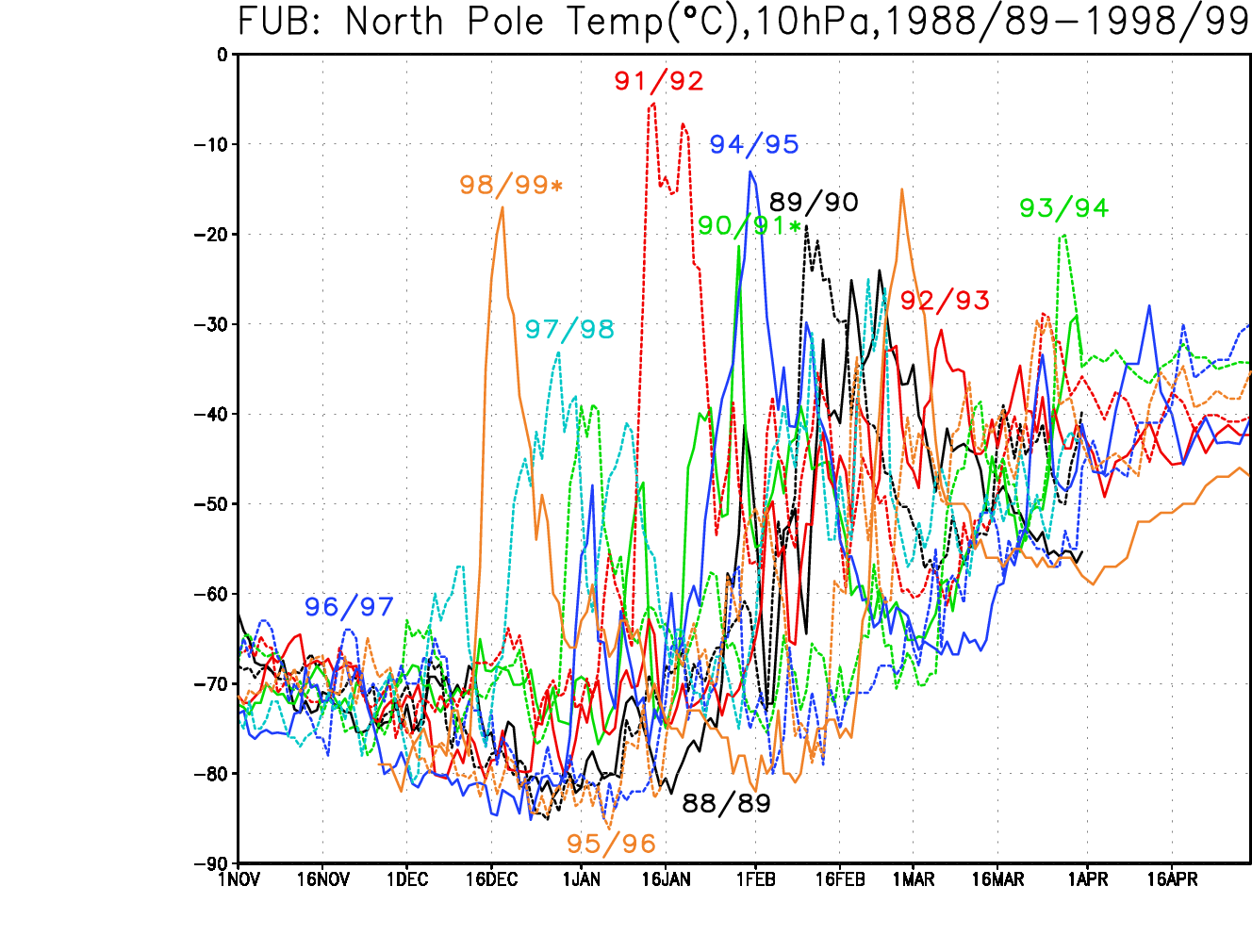Model topic: Sudden stratospheric warmings
Overview
Teaching: 0 min
Exercises: 0 minQuestions
How to analyze SSWs in the CMIP6 data?
Objectives
Learn about SSWs
Learn to analyze CMIP6 data
Introduction
Sudden stratospheric warmings (SSWs) are events in which the temperature of the polar stratosphere abruptly rises, accompanied by a disruption of the westerly winds in the polar vortex. SSWs are classified into four different types depending on the timing and severity of the event: Canadian, Minor, Major, and Final (WMO criteria; see lecture slides). The frequency of occurrence depends on the type of SSW and is dramatically different in the Northern and Southern hemispheres. The most dramatic impact on the General Circulation of the Atmosphere appears with major midwinter SSW, which we are focusing on here. Major SSWs are interesting examples of troposphere-stratosphere interaction. Not only are SSWs initially forced by upward-propagating waves from the troposphere, but the subsequent disruption of the polar vortex, in case of major midwinter SSW, can in turn also change the surface weather.
 (Krüger, 2002: UiO lecture slides)
(Krüger, 2002: UiO lecture slides)
Research question ideas
- Do CMIP6 models (NorESM2) simulate major SSWs?
- How do the frequency and timing of these compare to observations?
- What is the impact of major SSWs on the surface climate?
- Are major SSWs likely to change in a future climate? Under extreme climate change?
- Ditto their surface climate impact?
Data
Daily [ta, ua, zg] (at least available for NorESM2), FUB dataset
References
- WMO criteria (see lecture slides)
- A new look at stratospheric sudden warmings. Part I: Climatology and Modeling Benchmarks: Charlton and Polvani, 2007
- A new look at stratospheric sudden warmings. Part II: Evaluation of numerical model simulations: Charlton et al., 2007
- CMIP5 models: Charlton-Perez et al 2013
- Sudden Stratospheric Warmings: Baldwin et al.
- SSWs and stratosphere-troposphere coupling in CMIP6 abrupt-4xCO2: Ayarzagüena et al., 2020
- Blog post: On the sudden stratospheric warming and polar vortex of early 2021
Key Points
SSW